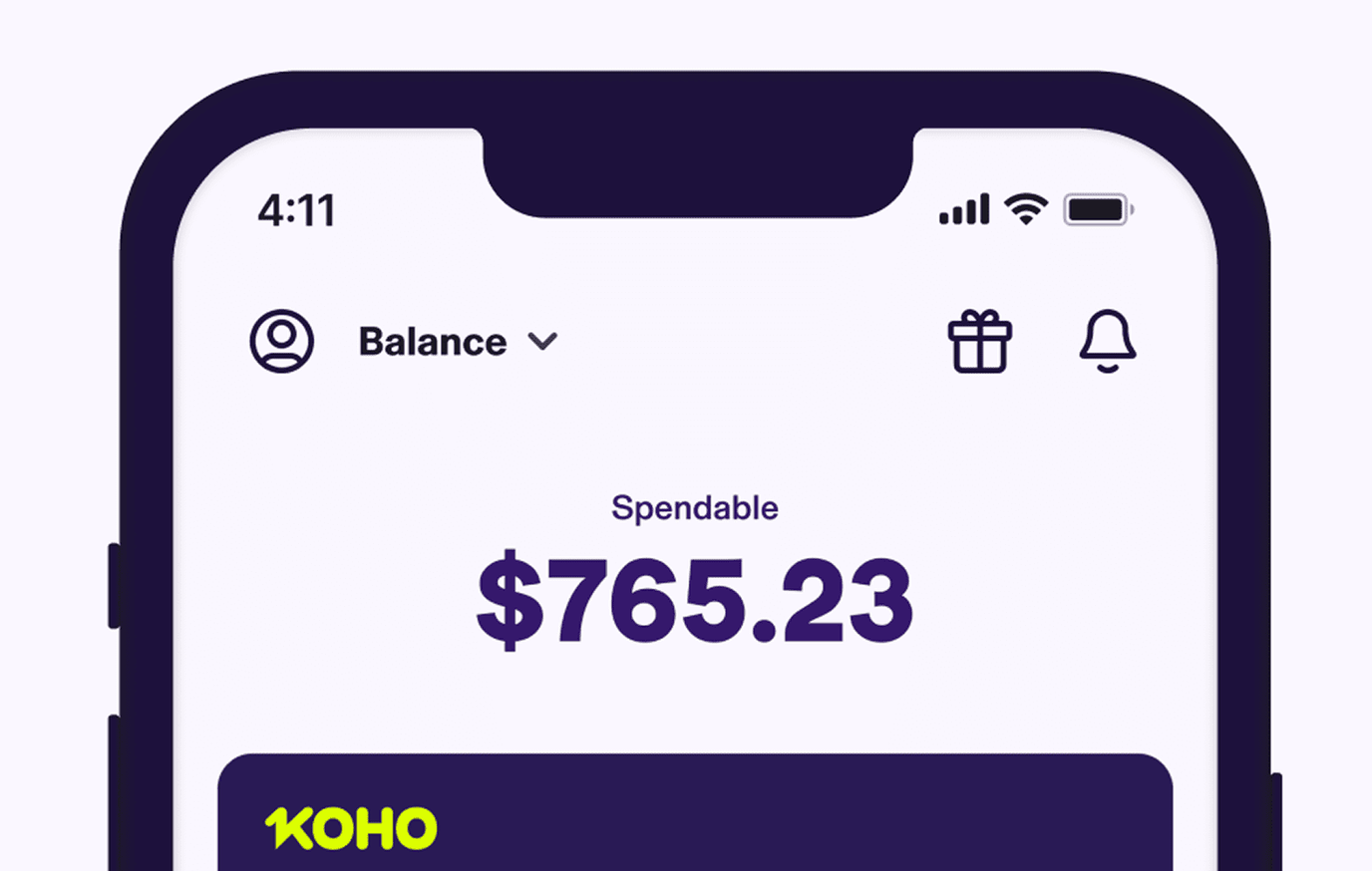Interest is the cost of borrowing money or the reward you earn for saving it.
If you’ve ever used a credit card, taken out a loan, or put money into a savings account, you’ve dealt with interest (whether you noticed it or not).
Earn 3.5% Interest On Your Entire Balance
The basics: earning vs. paying interest
There are two main ways interest shows up in your life:
You earn interest
This happens when you save or invest money
Example: Money in a high interest savings account grows over time because the bank or financial institution is paying you interest.
You pay interest
This happens when you borrow money
Example: Credit cards, lines of credit, car loans, and mortgages all charge you interest on the amount you owe.
In short:
Saving = interest works for you
Borrowing = interest works against you (if you’re not careful)
One of Canada's best high interest rates
KOHO High Interest Savings
KOHO offers a high interest savings feature designed to help you make interest work in your favour, not against you.
Earn interest on your balance
Eligible funds in your KOHO account can earn up 3.5% interest without promotional offers.Benefit from regular compounding
Interest is generally calculated frequently (often daily) and paid out on a regular schedule (monthly), so your balance can grow over time without you having to do anything.Stay flexible with your money
Unlike locking funds away in longer-term products, you can usually still access your money for everyday spending or short-term goals, while it earns interest in the background.See your growth in-app
You can track your balance and the interest you’ve earned, making it easier to stay motivated and keep saving.
Simple vs. compound interest
There are two main types of interest you’ll hear about: simple and compound.
Simple interest
Simple interest is calculated only on the original amount (the “principal”).
If you put $1,000 somewhere that pays 5% simple interest per year:
Year 1: 5% of $1,000 = $50
Year 2: 5% of $1,000 = $50
Year 3: 5% of $1,000 = $50
After 3 years, you’d have earned $150 in interest, for a total of $1,150.
Compound interest
Compound interest is where things get powerful.
With compound interest, you earn interest on:
Your original amount plus
Any interest you’ve already earned
Same example: $1,000 at 5% interest, compounded yearly:
Year 1: 5% of $1,000 = $50 → new balance: $1,050
Year 2: 5% of $1,050 = $52.50 → new balance: $1,102.50
Year 3: 5% of $1,102.50 = $55.13 → new balance: $1,157.63
You earn more over time because each year, the base keeps growing. That’s the effect people mean when they talk about “letting your money work for you.”
How banks calculate interest on savings
Most savings products use three pieces of info:
Principal – how much money you have in the account
Interest rate – the annual rate (e.g. 4% per year)
Compounding frequency – how often interest is calculated (daily, monthly, etc.)
A common setup is:
Interest is calculated daily based on your balance
Then paid out monthly into your account
That means:
The earlier you deposit money, the more days it has to earn interest
Keeping money in the account (instead of moving it in and out constantly) can help you earn more over time
How interest works on debt
Unfortunately, interest doesn’t just grow your savings — it can also grow your debt.
Credit cards
Credit cards usually have high interest rates compared to savings accounts. If you don’t pay your full statement balance by the due date, interest starts adding up on the amount you carry over.
Because of compounding, credit card interest can snowball quickly if you:
Only make minimum payments
Keep using the card while carrying a balance
That’s why it’s usually best to:
Pay off your balance in full whenever you can
Or at least pay more than the minimum to reduce how much interest you’ll pay over time
Loans and lines of credit
With loans (like car loans or personal loans), your interest rate is usually fixed and you pay it back over a set schedule.
With lines of credit (or overdrafts), interest is charged on the amount you’re using, and it can fluctuate if the rate is variable.
Either way, the key idea is the same:
The longer you take to pay off what you owe, the more interest you’ll pay overall.
Why interest matters for your goals
Understanding interest helps you make smarter money decisions:
Saving for goals
A higher interest rate on your savings means your money can grow faster, helping you reach goals like an emergency fund, vacation, or home down payment sooner.
Managing debt
Knowing how much interest you’re paying can motivate you to pay off high-interest debt first (like credit cards) and avoid carrying balances when possible.
Building credit
Paying what you owe on time and keeping your balances under control can help you build a strong credit profile — which can lower the cost of borrowing for big goals like a car or mortgage.
Bringing it all together
Interest isn’t just a confusing number in the fine print — it’s one of the most important forces in your financial life.
When you save, interest can quietly grow your money in the background.
When you borrow, interest is the price you pay for using someone else’s money.
Used wisely, interest can move you toward your goals. Ignored, it can hold you back.
